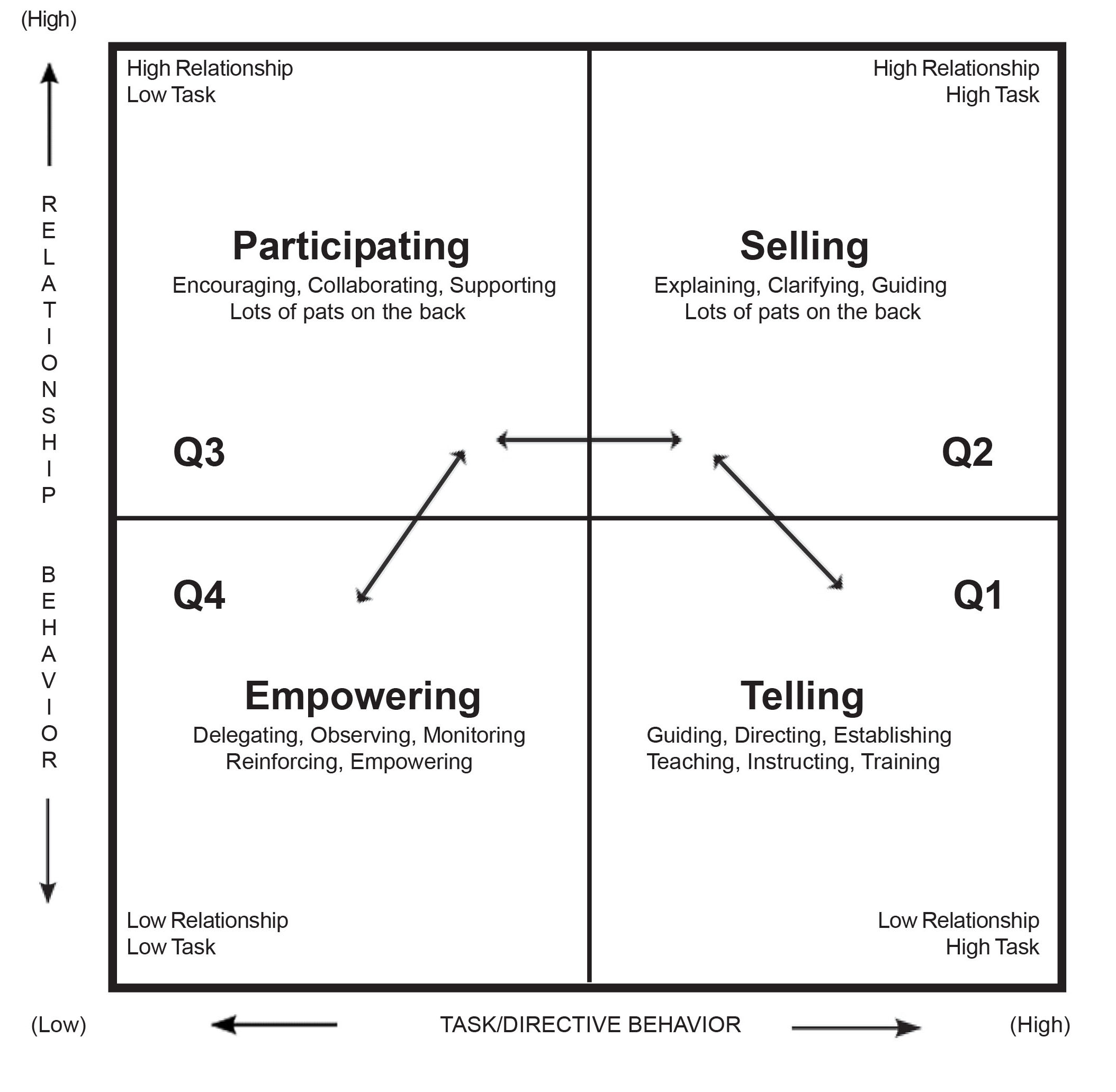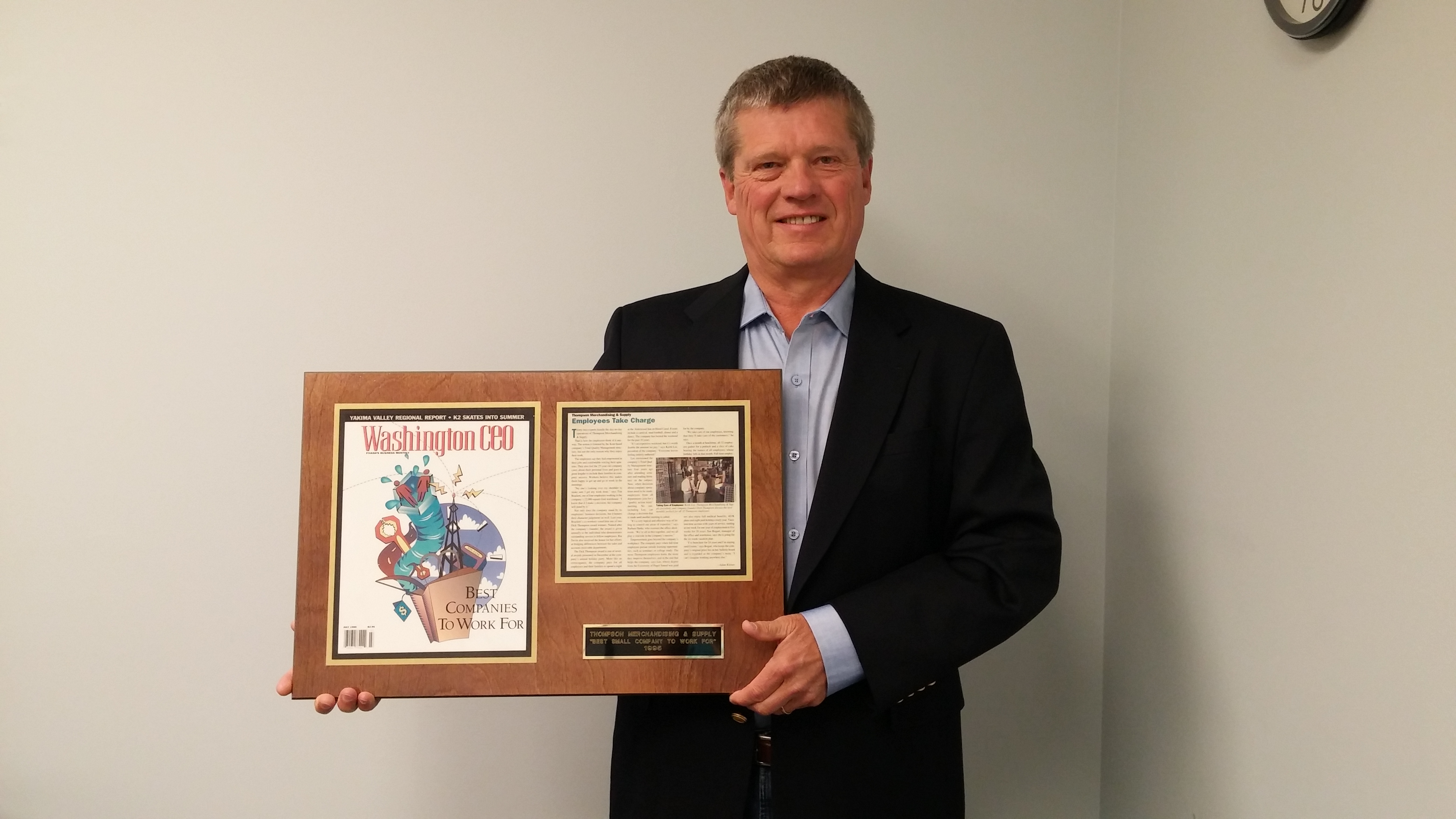I’m mostly a black and white kind of guy. There’s good, there’s bad. There’s right, there’s wrong. There’s proper behavior, there’s stupid behavior. You succeed, or you fail; and you don’t blame anyone else.
So when I heard the term “Situational Leadership” I thought, Holy cow, another feel-good, politically correct excuse for not performing. I was wrong – way wrong.
Situational Relationship Behavior is the extent to which the leader engages in 2-way communication; in other words, your interaction with people.
High relationship means you’re highly engaged. You’re giving them additional training and support on an ongoing basis. You’re interacting with them quite frequently.
Low relationship behavior means that you’re not as engaged in 2-way communication.
Task Behavior is the extent to which the leader is engaged in spelling out the duties and responsibilities. High task behavior means the manager is more detailed and directive toward telling the subordinate step-by-step what to do.
Low task behavior is when the manager assigns the task, delegates the task, and is not involved with actually getting the job done.
A new employee (team member) typically starts in Q1 (see picture) and the manager does a lot of Telling (high task, low relationship). There is a lot of instruction showing them how to do the job. You’re not patting them on the back yet because they haven’t shown anything yet. You’re teaching and training them, so there is not a lot of relationship behavior.
After a few months, the new employee is making some progress and it’s time to move from telling to Selling (high task, high relationship). The manager is still directing and showing, but the communication is more 2-way. The manager gives a lot of reinforcement while explaining, clarifying and persuading. The manager is mining for ideas from the team member and teaching them to think on their own. The leader still defines the roles and tasks, but seeks ideas and suggestions. The leader pats them on the back. The more you can guide them to thinking things out the more beneficial it is to you in the future.
As the individual grows, it’s time for the manager to move from selling to Participating (high relationship, low task). The person understands the job and knows how to do it, but doesn’t have a lot of confidence yet. They need reinforcement on an ongoing basis until they develop confidence. The manager gives the individual a lot of support, pats him on the back, and stays very close. Because the individual knows the job, there is much less directive behavior from the manager.
As the team member becomes more and more competent, he becomes a true expert at the job and the manager moves to Empowering (low relationship, low task). The team member is doing 80% or more of the talking during the PDI. The manager is observing, monitoring, reinforcing, and delegating.
Your goal as the manager is to get your staff to Quadrant 4, but as the arrows in the graph above show, it’s not a one-way street. Depending on the job or task, you may move down or up a quadrant, or even two – and sometimes even three.
In one of my businesses, one of my vice presidents is fabulous at her job and my management style is almost always empowering. But she’s not a numbers person, so when it comes to working with numbers my management style moves to Participating and sometimes to Selling or even Telling. With her it was not uncommon for me to say, “That number doesn’t make sense, check it out.”
It’s also important to understand that you’re working with people, not machines. We all have personal lives away from business and for all of us, our personal lives influence us at work. Sometimes it’s critically important to move down a quadrant when a team member has personal problems.
Leaving your empathy and understanding behind, you have a lot invested in someone who’s in Q4. Moving up on the relationship scale to Participating or even to Selling is sometimes critical to get that person back up to speed. And, of course, if things get worse you may need to move to Telling with get this done or you’ll be fired.
For a complete discussion of Situational Leadership get my book Performance Reviews Suck for FREE. I just ask that you help with postage and handling by paying $2.97.
Do What You Do So Well
That People Can’t Help Telling Others About You















